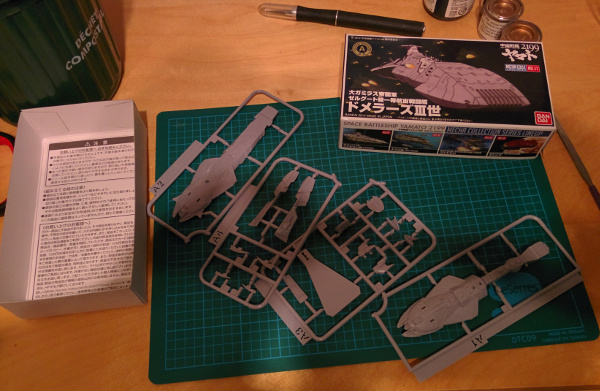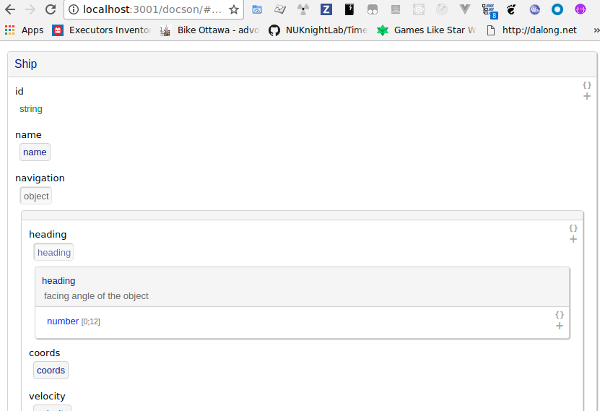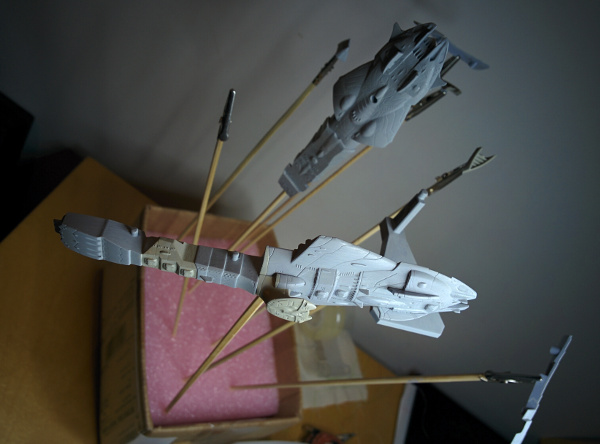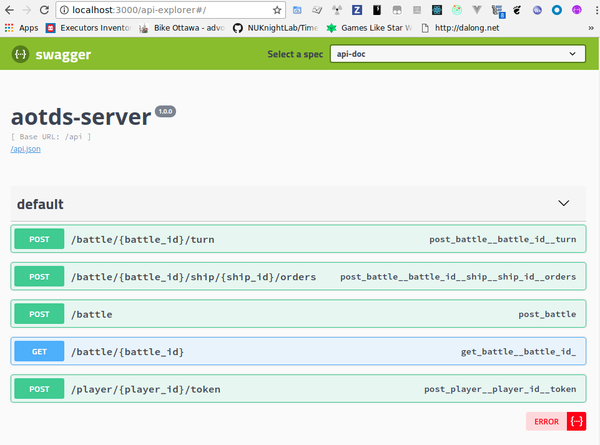JavaScript of the Darkest Sea
JavaScript of the Darkest Sea

For many years now, mentions of a mythical spaceship game were sighted in many of my blog entries. Like the tantalizing, terrifying glimpses of a monstrous fin breaching the turmoiled flotsam of a chaotic ocean surface, they hinted at the slow, ponderous movements of a leviathan evolving just beyond our realm of perception.
Well, reach out for your coveralls and Sou’westers, fellow sailors, for this beast is about to leap into view. This blog entry is all about a high-level walkthrough of the technologies I sampled for that epic project — sharing my impressions and findings, likes and dislikes in the hope they’ll help other people navigate this sometimes exalting, oft befuddling place that is the SargaJSo sea. And who knows? Perhaps it’ll somehow tempt some hapless souls into joining the fun.
Before the darkest time
To truly understand this project, we have to jump back to the early days of of my young tender teenage years (yup, it’s going to be that kind of blog entry. You prolly better to go and pour yourself a beer or get a glass of wine, you gonna need it) when a dear friend and homonym introduced me to the world of Battletech. For those who don’t know, Battletech is a tabletop game where giant robots wage war and laser/missile/fisticuff the steel-clad hell out of each others. It’s a lot of fun, and many dice-fueled, machine oil-dripping, metal-screeching sessions ensued.
Fast-forward to modern time. These days, I don’t have that much time to play, but when I do, I’m still awfully fond of computer turn-based, campaign-oriented types of game. Computer games mostly because the number of local friends I have has dwindled throughout the decades. Turn-based because, frankly, I’m not a quick thinker nor I have any type of recommendable reflexes; all my attempts at ANY form of RTS or FPS games ended up with quick and numerous deaths — all pitiful, all mine. And campaign-based because I’m a storyteller at heart, and there is nothign that lend itself more to dramatic narrative than the rise and fall of warring factions.
In the series of games I’ve played to satisfy my belligerent cravings, honorable mentions go to the X-COM-inspired UFO: Alien Invasion. And then there is Megamek, a java-based port of the original Battletech. This one has a good community, and a few campaign servers where you pit your war machines against fellow gamers. It’s a good port, but not without flaws. The interface is not the snazziest (although, to be honest, I don’t really care about that), but more devastating is the glacier-like speed of games. We’re talking many hours of crawling stop-and-go for even smallish games here. And while it is, in theory, possible to run local campaign servers where a small group of friends could coordinate their gaming time, it’s a process I never managed to go through (as mentioned, everything is Java-based, and the documentation is on the scarce side).
So one night, after I tried to set up one of those campaign servers and failed, I did what I’m wont to do. To wit: I bellowed to the uncaring night “Fine! I’ll write my own game! And it’ll have campaigns! And it will be AWESOME!”
Yet another port of Battletech was, without surprise, one of the first considerations. But this is a game with many intricacies, and my delusions of gamedeur weren’t potent enough to totally disassociate me from the realms of what’s possible. Perhaps it’d be wise to begin with something with a… more modest set of rules?
In fact, why not a space fleets game? That would take care of the headaches of terrains, obstacles and line-of-sights. The universe of Battletech does had spaceship extensions, but they are a tad meh. I thought about Star Fleet Battles, but if I wanted simpler rules, that’d be going in the wrong direction. And then I found Full Thrust. Officially a miniature game (à la Warhammer 4K), it has a set of rules that are simple enough not to require a PhDnD to master, yet complex enough to make the wee bean-counter in me squee with glee.
And just like that, I had found a Grail to quest toward. I even promptly managed to go over the most difficult part of this (nay, of any) project. Namely, come out with a cool codename for it:
Overly dramatic, portentous, bearing the promise of fiery battles smelling faintly of rum. It was perfect.
And then I found out about the miniature X-Wing game (which seems to be fun, but alas coming with a pricetag as astronomical as its promised dogfights). And then I found out about the variant it spanned dealing with capital ships. And then I checked out and found that it was called ArmadSON OF A BUTTERFLY—
So yeah, as I was saying, I came out with a codename for it:
Still cool.
Throughout the following years that pet project was used as the fun end to equally fun yet more practical means of trying out technologies. More Dancer modules I dare to admit were created as potential pieces for it. Then sometime last year I decided it would be the perfect test subject for all those new-fangled JavaScript things.
So I dove into all those new-fangled JavaScript things.
And I really mean
All.
Of.
Them.
I almost went mad. Probably went mad. Okay, fine, madder. Point is, I drank from the fire-hose until my water retention came within spitting distance of the arctic icesheet. Lately, things finally began to stackbilize enough and, hey, what would you know I had something somewhat showable. Not yet playable, hardly pretty yet, but showable. So show it I had to.
And just like that we can conclude this overstuffed recap session, and get into the meat of the matter.
And how meaty that matter is. The project is so epic, that it had to be conceived as a tech turducken: a game engine orchestrated by a RESTish server, itself fronted by a web application. Each layer having its different accents and libraries. In the following sections, we’ll visit them one by one.
Oh, before we do, a quick sidenote: a new Battletech game made by the original crew just happen to come out of beta a few days ago. I’ll definitively have a look at it. I must say, though, that I’m a little scared by the requirements — my computer tends to be on the wimpy side, considering my cli-jokey tendencies. And… I mean, 30gb of free disk space? That’s… that’s almost, like, twice the size the JavaScript libraries I’ve used on this project (I kid, I kid! I… perhaps wish I was kidding more, though…).
The Heart of Darkest

package.json, an
artist rendering
At the very core of the whole thing lies the implementation of the game logic. Very early, I latched on Redux to be system’s armature. Indeed, Redux (and the whole slew of similar store framework) is just perfect to drive the very programmatic-friendly rules of that type of game. You have actions representing the, uh, things that happen (ships moving, weapons firing, etc), middleware pieces that orchestrate the reactions to those things (the ships are moving where, the weapon fires are dealing what kind of damage), and a dirt-simple data structure that represent the state of the game. Both actions and state are all JSON objects, so easy to read and follow, and the middleware bits are modular and lend themselves well be tested individually or as a whole. To give you an idea, the main middleware watching for the action triggering a new turn looks like
const play_turn = mw_for( Actions.PLAY_TURN,
({getState, dispatch}) => next => action => {
// don't play turn if some players didn't play their
// turn yet
if ( !action.force && (
players_not_done(getState()).length > 0
|| active_players(getState()).length <= 1 ) ) {
return;
}
next(action);
dispatch(Actions.move_objects());
dispatch(Actions.assign_weapons_to_firecons());
dispatch(Actions.execute_firecon_orders());
dispatch(Actions.fire_weapons());
dispatch(Actions.clear_orders());
});in turn, the action to move all objects is later on forked into per-object actions down the line via
const objects_movement_phase = mw_for( Actions.MOVE_OBJECTS,
({ getState, dispatch }) => next => action => {
next(action);
_.get( getState(), 'objects', [] )
.filter( o => o.navigation )
.map( o => o.id ).forEach( id =>
dispatch( Actions.move_object(id) )
);
});and each object movement is then dealt with via
const object_movement_phase = mw_for( Actions.MOVE_OBJECT,
({getState, dispatch}) => next => action => {
let object = get_object_by_id( getState(), action.object_id );
next(u({
navigation:
plot_movement( object, _.get( object, 'orders.navigation' ) )
})(action))
});The main idea being to keep each piece involved small and targeted. Which was pleasantly less hard to do than expected, thanks to the help of lodash (and its functional programming variant) and updeep.
War Sagas
Originally, the battle middlewares were to be driven by sagas, as they are easy to test and, well, ‘sagas’ just sound so damn epic. Unfortunately, I discovered that there is one fairly significant rift between how I want to do things, and how Sagas allow you to do them.
You see, the way I have my chain of middlewares set up, I have situations where some upstream middleware issue a high-level action (say, triggering the movement phase of a ship), and downstream middlewares flesh out the details before they are fed to the reducer.
(that’s what is happening in that weird next(u(...)) stanza in the
object_movement_phase middleware of the previous section.
The problem is that with sagas, actions cannot be altered nor blocked: by the time you see them, they already made their way to the reducer.
Not that it’s an unsolvable problem, mind you. A straight-forward although
questionably
palatable solution would be to have the middleware issue a second
MOVE_SHIP action, and have the reducer ignore any MOVE_SHIP actions that
don’t have all its trimmings.
A better approach would be to lay off the overloading sauce and
define two actions for the two steps that are implicit in MOVE_SHIP.
In all honesty, I think sagas have it right and I have it wrong there. The
fleshing out actions by middlewares as I’m doing it is clever, but not
necessarely good clever. Having multiple actions is more verbose,
but would let the actions have stricter, more specific schemas (COMPUTE_MOVE_SHIP only has
the ship id, MOVE_SHIP must have coords). So what I’m saying is… I am
still on the fence on this one, and might revisit sagas in a not-so-distant
future. Happily enough, for Redux middlewares are middlewares, so when the
pendulum does swing, the basic
middlewares I’m currently using could easily be uplifted piecemeal as sagas.
Dialects sea
That the project was going to be JavaScript-based was firmly nailed in. But JavaScript covers a vast array of dialects. Considering my thirst for futurism, it was evident that I’d at least Babel my way to the latest and greatest.
To enforce types and a sound structure, should I lean into Flow or TypeScript? I tried both. And while they each had their appeal, the endless compatibility dances I had to perform to get all the shinies I wanted to see in the project work well together made me decide to stick with “vanilla” JavaScript.
Still, JSON objects are incredibly flexible, and I’m terrible at keeping track of the data structures I come with; I needed some structural backbone to lean to. Something to document (and potentially validate) all those bits of data. For both, I reached out for JSON schema. Hilariously enough, I went to look out for a nice tool to generate documentation out of those JSON schemas, and somehow ended up joining the core crew of docson. Go figure.

Darkjest sea
For testing, I was dead-set on using one of the JavaScript TAP testing
libraries. Partly because of my familiarity with TAP, partly because I like
the concept of the test files being just normal JavaScript scripts, and not
needing to be run by a special testrunner. And also because of a personal
distate for the discomfortably awkward English that most popular libraries foster
(looking at you expect().to.be.match() and it( 'puts the lotion' )).
Eventually, though, I did give Jest a chance, and was agreeably surprised. Jest provides out of the box expectation and mocking functions that don’t suck, and strike a nice balance between being helpful and not overdoing it. So to Jest I went.
Debugest sea
Logging. Oh lord. Such a simple thing, and I wasted oh so many hours trying to find the perfect solution what would work in both the browser and in Node. I tried Bunyan, and the first thing that came to mind was “oooh, so much information”, and then came the “aaaaaaah, too noisy, too noisy!“. And so many others… at the end settled for zen-like simplicity in the shape of debug. So far it works well for me, and when the time come to have more regimented logs, I might step up to pino-debug.
DarkREST sea

The next step was to open the communication gates with the game engine. Eventually (and by that, I mean in the next section), we’ll want a spiffy UI with purty things that go zoom and pew pew, but as a foundation, we want a RESTish server that works for both people and machine. Mind you, I mostly mean “RESTful”, there. I just use an even looser term to give myself the leeway to be lax in my following the REST and RESTful percepts, and thus preemptively defusing any potential outrage from the nomenclature police.
So, for that RESTish interface, I went with Koa. In fairness I could have just as well went for Express, but I wanted to ride the bleeding edge train all the hemoglobous way.
Notice that I said that the interface had to be usable by humans as well. To do that, and to go on on my resolution to have order, I ensured that the the RESTish service would be driven by Swagger/OpenAPI specs. Happily enough, schemas in OpenAPI are a subset of JSON schema specs, so the schemas already defined for the game engine could be reused as needed. Win. And thanks to some judicious Koa plugins, it’s a breeze to have those specs displayed and made interactive as part of the service.

Fleets of da taba se(a)
For this applications, the initial requirements for the database were simple. Games have turns. Turns are Redux JSON data structures. We need to stash the turns somewhere. Nothing fancy, a document store, really, would suffice. So at first had my eyes on PouchDB. But at some point I decided that my needs were so basic that using a classical database via Objection and its JSON type was more than enough to get me going.
Auth of the darkest sea
For the authentication system, still vastly protozoic, I opted for JSON Web Tokens, mostly because Genehack convinced me they are a good thing.
Darkwebst sockets
And finally, while chatting HTTP back and forth with the RESTish service is perfectly fine for most things, I also wanted direct communication with the players when a new turn would be available. So Websockets was also thrown into the mix.
App of the darkest sea

Playing a game solely via a RESTish interface would be spartan, and that won’t do. No, this project also needed a cool web front-end.
DarkJSX sea
Again, this is a part of the project where I tried aaaaall the things. For quite a long time, I was set on Vue. As far as I can tell, my final two main contenders, Vue and React, are very close in term of ease of development, but the line between HTML and JavaScript were, to me, more distinct and easier to grok with Vue.
But using Vue and Redux felt a little bastardized, so for the state of the app I gave a go to Vue’s own VueX.
Using a different store system than the game engine, with all the slightly different things it involve, didn’t bother me too much. At the end, it’s the reactive nature of VueX that turned me off that solution. Whereas Redux is all about functional programming and lack of side-effects, the reactive nature of VueX makes it entirely about side-effects. When it works, it’s magic, but when it doesn’t, the debugging can be quite a pain. So back to Redux I went. And, then, back to React as well. Perhaps because those two work very well together, perhaps because the development tools available in Chrome and Firefox for them both are truly a joy to work with.
The switch also had some consequences for the building process of the app. With Vue I was leveraging Poi, which deal with all the bothers of Babel and Webpack configurations for us. Once back to React, it also meant back to raw Webpack. Which, oh well, is not so bad.
Darktest sea
Of course, I’m still testing and using Jest when I can. For the prototyping of the React components, however, I also dragged in Storybook, which is superb in the way it allows to play with pieces of the interface individually, instead of having to juggle with the whole application every time one wants to tinker on an itsy-bitsy detail.
Flotsam and driftwood
For styling, I had to go with postcss (had to keep the bleeding theme intact, you understand). For pre-made components, I picked Blueprint.
For the visualization of the battle map and ships, it had to be SVG. Indeed, I think SVG was the very first technology I had earmarked to play with on this project. That was when then there was the tantalizing promises of easy animations via SMIL. And that kind of petered out. And then JavaScript libraries and CSS animations came along, and gave it a revival of sort.
Fleets of the— ah heck, let’s look at the damn thing already
What does the app looks like currently? It looks like this:

Granted, it’s not pretty yet. But… but we have a battle map that can be panned and moved around. We have a command panel for our ships. We can see the course of the ships change as we play with thrust and turns and banking. We can assign weapons to stations by dragging them. We can select targets by, uh, selecting them in a drop-down. It’s not done yet, but it’s so close to playability I can almost smell it.